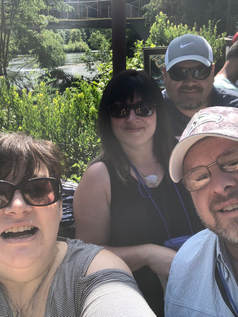 The July road trip gang - me, Kristen, Rick, and my hubby Jim The July road trip gang - me, Kristen, Rick, and my hubby Jim Steeped in Gold Rush lore, Southern Oregon and Northern California are the site of numerous haunts associated with legends of the Wild West. In mid-July and early August, I embarked on two road trips that took us into the heart of Gold Rush country and straight into the haunted history of Southern Oregon and Northern California. Oregon Caves Chateau, Oregon Caves National Monument Built in 1934, the Chateau at Oregon Caves is a rustic 6-floor (three stories in the front and six floors in the back) lodge right across from the caves themselves, which you can explore on a guided tour during the summer months. The road to the caves is winding and steep, but its easily accessed every summer by thousands of vehicles filled with families eager to explore the caves. The exterior of the Chateau is cedar bark, giving it a rustic appearance. Inside, giant log posts support the structure, and the designers brought the outdoors in with wooden beams, stone fireplaces, and wooden floors and staircases. In the lobby, giant windows look out on a vast expanse of towering evergreens. The Chateau is an old building, and it’s ready for refurbishment. In fact, 2018 is its final summer for a few years. Staff members told us it was closing for the next two years to refurbish it, but it will reopen for the summer season of 2020. Like many old, rustic buildings, the Chateau has its own haunting tale, which surrounds the rooms on the third floor. Rumor has it that on the third floor, a new bride either jumped or was pushed to her death out a window when she found her new husband in a passionate embrace with a Chateau employee. Guests and employees report the bride, Elizabeth, as an unhappy and unfriendly ghost who is heard moaning and crying in closets, empty rooms, and hallways on the third floor. No historical records show of any deaths at the Chateau, and the sad new bride who kills herself is a popular origin story for ghosts in all kinds of haunted locations. So while proof is low, anecdotal reports run high. Many people believe something supernatural occurs on the third floor. Jim and I stayed in a third floor room (in fact, I was in the room next to where the bride supposedly killed herself). And while I have no proof there is any haunting, there are two incidents somewhat of interest. First, every time I stepped onto the third floor, I was uncharacteristically angry, and that anger continued until I left again. Additionally, when Jim and I were in our room changing clothes so we could go on our cave tour, our door opened itself. That’s not to say it wasn’t improperly latched, but again, it’s interesting but inconclusive. Regardless of whether the Oregon Caves Chateau is haunted, it is worth a visit just for the cave tour. Tours will be open during construction on the Chateau, and the Chateau re-opens for the summer of 2020. More information: http://www.oregoncaveschateau.com 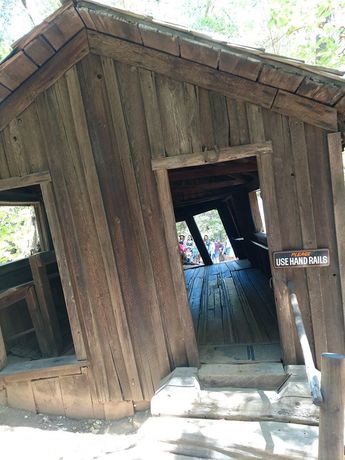 The House of Mystery at the Oregon Vortex. Please, for the love of God, do what the sign says and hold onto the rails. Photo by Kristen Gray. The House of Mystery at the Oregon Vortex. Please, for the love of God, do what the sign says and hold onto the rails. Photo by Kristen Gray. House of Mystery, Oregon Vortex If Zak Bagans is to be believed, he is the chosen one because a bird pooped on him at the Oregon Vortex. That’s right – last season Ghost Adventures filmed at this well-known Southern Oregon tourist attraction. As the story goes, the forces in the vortex are so powerful, there are no animals that will come within the most intense sections, which is why a bird pooping on someone is apparently an indication of the supernatural. With me so far? I kid, Zak Bagans, I kid. Kind of. But visit the Oregon Vortex we did (I watched the GA about it after my visit). The House of Mystery is a small one-room cabin that slid down a hill, so it’s embedded at a slant in the ground. But, it sits smack in the middle of the Oregon Vortex, a place where mysterious forces screw with physics. Visitors are only allowed on group tours where scripted guides offer demonstrations to show how people’s height changes on level ground and other funky phenomena. They also tell ghost stories about how it is haunted by John Lister, an owner of the property who is said to have performed hundreds if not thousands of physics experiments at the Vortex, so fascinated was he with the property. The Vortex is slightly interesting – probably more so with a skilled and entertaining guide, and the physics effects while subtle are interesting. If you’re prone to motion sickness, I recommend avoiding stepping into the crooked house because it can mess with your sense of spatial perception, but if you start to feel wonky, step to the window and look out it at the horizon. It should calm you right down. I will say that on the property, I definitely felt odd. There was some kind of a shift. My friend Kristen felt something similar; it was as if gravity was a bit heavier there or something. We saw no evidence of ghosts. The House of Mystery at the Oregon Vortex is worth a visit as a curiosity, but don’t expect a bird to poop on your head unless you, too, are the chosen one. More information: http://www.oregonvortex.com/ 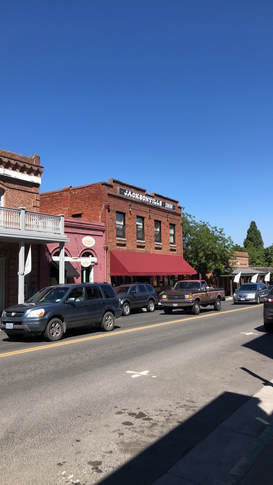 Downtown Jacksonville Downtown Jacksonville Jacksonville, Oregon Nestled in Southern Oregon southwest of Medford, Jacksonville is an adorable Gold Rush town that has preserved its historic buildings beautifully. The main drag is now mostly upscale touristy shopping, but it’s cute as can be and gives you a little taste of the Wild West. The town has haunted trolley tours, and the Jacksonville Inn is reported to be haunted, as well. We didn’t experience anything there, but we had a lovely chat with a man at the historical society who told us all about the town back in its Gold Rush days, and we enjoyed the rustic and beautiful buildings. It’s worth visiting if you’re in the area. More information: http://jacksonvilleoregon.com/ Wolf Creek Inn, Wolf Creek, OR Located about 30 minutes north of Grants Pass right along I-5, the Wolf Creek Inn is a historic and picturesque inn on a lovely and peaceful piece of property. It has nine guest rooms, and the owners have done a fantastic job of preserving its historic character, including a room frequented by Clark Gable appropriately called the Clark Gable Room and another frequented by Jack London called – you guessed it – the Jack London Room. Others who have stayed included Mary Pickford, Douglas Fairbanks, John Wayne, and Orson Wells. And, of course, Karen Frazier. I’m pretty sure they’re going to name a room after me. The Inn was built in 1883 as a stage coach stop along the Applegate Trail, and it boasts nine guest rooms and beautifully preserved public areas. It also has a restaurant that makes tasty food, and the rooms are, quite frankly, adorable. It turns out Wolf Creek Inn was another haunt featured on Ghost Adventures last season; I watched it after our trip to see what all the hubbub was about. According to GA, the inn and area are haunted by some kind of vampire creature. So I saw no sign of that in case you were wondering, and if I did, I’d imagine I’m one of the undead now and wouldn’t tell you if I was because I want to be able to surprise my victims. But I digress… Other reports of hauntings include Jack London, who loved it so much he spent a summer there writing a book, and a female stage coach driver who dressed as a man calling herself One Eyed Charlie. I was unaware of these legends when I entered the hotel, and the first thing I saw was a woman that was a man. But that was just in my head and I immediately dismissed it until I heard the whole one-eyed Charlie story. My friend Kristen Gray who was with me on the trip talked to the innkeeper, who took over after GA filmed there. She said things were pretty stirred up for a while and a lot of weird stuff happened, but that she just talked to them as she went about her business and things calmed down. Points of interest for people interested in ghosts include the Jack London Room, the Clark Gable Suite, and the second floor ballroom. While we didn’t have any haunted experiences, we loved the hotel. It’s charming, the service is good, and it has really good food. The room rates are reasonable, as well. I recommend going and staying for the charm and history – and maybe a ghost or two. More information: https://www.wolfcreekinn.com/ 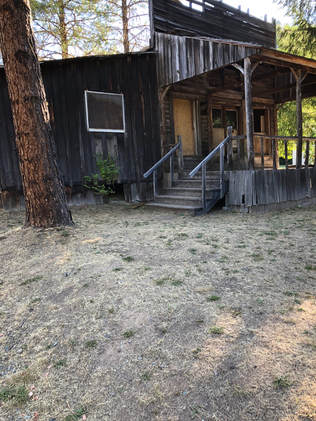 General store in Golden General store in Golden Golden, Oregon I’ve got to say – it seems as if we were unintentionally walking in the footsteps of Zak and the Ghost Adventures gang on our Southern Oregon road trip in early July. Because surprise, surprise; they went to Golden, Oregon, as well. Golden is a ghost town about five miles from the Wolf Creek Inn along a shady tree-lined country road. It was settled near Coyote Creek during the Gold Rush in the 1840s, first as a gold miners’ camp and then a Chinese miners camp. Later, a Campbellite church was built along with a general store, a school, and a minister’s house. So picturesque is the abandoned ghost town, Bonanza filmed there (the fake graveyard they added still stands next to the church), and well, so did Ghost Adventures. Guess what I watched when I got home? Currently, the school, general store, church, outhouse, and minister’s house still stand. You can go in the church and the school, but the other buildings are pretty dicey including an outhouse that’s about to fall over but is shored up by a few long planks. Feel free to use it if you like that sort of thing. (I’m kidding. Do NOT go use the outhouse and say, “Karen Frazier told me to,” or they won’t name a room after me at the Wolf Creek Inn.) Reports include a dark energy in the church (I bet you can’t guess who, on a certain television show, was possessed from the moment he entered there) and some kids in the schoolhouse. GA also reported some kind of demonic activity in the woods. I saw no evidence of that, but I wasn’t there long. I thought Golden was lovely and historic. It was picturesque, pretty, and I didn’t experience a thing. That’s not to say you won’t. Go visit. It’s a great little piece of history and a fun ghost town with a few buildings to explore. More information: https://oregonstateparks.org/index.cfm?do=parkPage.dsp_parkPage&parkId=189 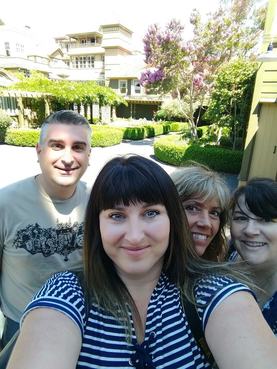 August road trip crew - Rocky, Kristen, Kasci, and me outside the Winchester Mystery House. Photo by Kristen Gray. August road trip crew - Rocky, Kristen, Kasci, and me outside the Winchester Mystery House. Photo by Kristen Gray. Winchester Mystery House, San Jose, CA I’m pretty sure everyone has heard of this place – or at least dedicated ghost people have. It’s on the bucket list of many. Kristen, Kasci, Rocky, and I went there on a whim since we were sort of in the neighborhood (if you consider being within 118 miles being “in the neighborhood”, which we did) during our early August Northern California road trip. If you’ve seen the movie Winchester (I just watched it today), you may be familiar with the broad strokes of the legend-y story of Sarah Winchester, heir to the Winchester Repeating Arms fortune. According to legend (and the movie), after the death of her daughter and husband, Sarah visited a medium who told her she was cursed by all the people Winchester guns had killed and told to move to California and build a house, never stopping, to keep the ghosts at bay. The movie takes a bit more license with the story, but legend holds the house to be supremely haunted by both protective and unhappy spirits. There is very little historic fact to uphold the legend; Sarah Winchester was the subject of a ton of gossip in San Jose given the bat crap crazy house she was building, and stories may have arisen from that. Some historians contend Sarah’s continuous building had nothing to do with ghosts or guilt about the Winchester fortune, and everything to do with her belief in Theosophy, Rosicrucianism, and Freemasonry, which actually pretty neatly account for her obsession with certain things like the number 13 and spider webs. One historian insists her obsessive building was to create a giant, Rosicrucian themed puzzle, while another insists her continuous building was an act of charity to keep locals employed. Sarah was notoriously generous with her staff; she paid them well and they were fiercely loyal to her, so not one of them after her death ever confirmed or denied rumors surrounding her and her most interesting house. With all that said, the house is pretty amazing. It sits right in the middle of downtown San Jose surrounded by the most beautiful gardens, grounds, fountains, and statues. The front façade is a beautiful Victorian style, and it’s only as you walk around the sides and back that you can see all of the various add-ons, styles, and materials as building continued over the decades. At one point, the house was as tall as 7 stories, but the Great San Francisco Earthquake took care of the top four. I can’t definitively say I had an experience, but from the moment I walked in the energy of the house was disorienting. But it was also hot, narrow, claustrophobic, I hadn’t eaten for hours, and I was probably dehydrated, so…. As we walked through the first few rooms, I grew more and more disoriented, especially once we entered her claustrophobic séance room which was in the exact center of the house. Leaving that room through a closet (because why wouldn’t you exit a room through a closet – I felt like I was going to Narnia), we passed through the bedroom where she died and into a large open area where I experienced a wall of black moving up over my eyes, and I felt like I was going to pass out. I left the tour at that point, went and had something to eat and drink, and felt better as I explored the exterior grounds. Does that mean I experienced a haunting? Who knows. However, what I will say is one of the employees mentioned sight loss as something people experience in the house. So yeah there’s that. Should you go? Heck yes because it’s ridiculously cool and a great story! Drink lots of water and understand there’s no climate control in the house. Stay with the tour or you could wander forever, and if you have the money, take the secondary tour (it’s only ten dollars more) which gets you into a lot of extra spaces. More information: https://www.winchestermysteryhouse.com/ 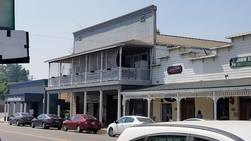 Ione Hotel - Photo by Kasci Lawrence Ione Hotel - Photo by Kasci Lawrence Ione Hotel, Ione, CA What’s a good haunted location tour of the Wild West without at least one brothel? That’s what the current Ione Hotel reportedly once was, with ladies of the evening serving the lonely gentlemen of the California Gold Rush. The hotel was built in the 1850s as a boarding house for miners and a stagecoach stop, and it has extremely rustic rooms (complete with water closets). In 1910, it was destroyed in a fire and rebuilt. I don’t know when it was a brothel, but claims are it was, and there’s even an image of the madam painted on a brick wall. So there’s that. One of the rooms supposedly was the sight of a murder during the brothel days and now bears images on the walls and carpets of roses and hummingbirds that won’t go away despite the fact they were never put there and have been painted over repeatedly. I saw them; it was a stretch but it’s a fun legend. There’s also a rumor of a boy drowning in the downstairs well. These are all common stories associated with such buildings. Are they true? No idea. There are numerous reports of ghostly activity from both guests and employees, but as far as I know, none of us (several of us stayed there) experienced anything except slightly lumpy and uncomfortable beds. I wouldn’t stay there again, but you might have an experience if you visit. If you happen to be in Ione, it’s the only hotel in town anyway. My advice is get your quoted rate in writing and don’t expect anyone to make up your room, be there to give you fresh towels, check you in or out, or anything else. On the plus side, temperatures were about 103, but there were window air conditioning units in the rooms, and there were no bed bugs. More information: http://www.ionehotel.com/ 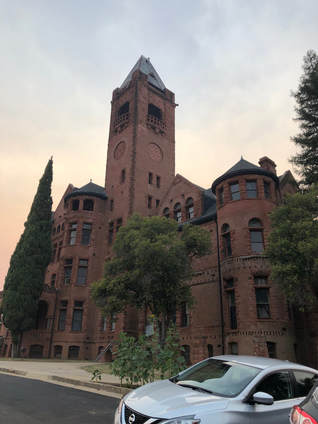 Preston Castle at sunset in the smoke haze from the Carr fire Preston Castle at sunset in the smoke haze from the Carr fire Preston Castle, Ione, CA Our final destination on our Northern California haunted road trip is a place many people’s bucket list, Preston Castle (and surprise surprise, guess who’s been there? That’s right! Ghost Adventures way back in the early days). We were there for a ghost conference event to raise money for the Preston Castle Foundation, which seeks to preserve the giant, crumbling castle that was opened in about 1895. The castle served as a reform school for boys aged 7 to 25, and when they closed it, it was because they built a new version right next door complete with a guard tower, razor wire, and a whole bunch of California condors floating above the property. Preston Castle sits on a sprawling property with many other buildings associated with the school – all also abandoned years ago. It looms over the city of Ione, a beautiful red brick giant from another time. The castle is in rough shape which is why preservation is so important. It’s a piece of history, and there are many reports of ghostly activity. There are also a ton of bats and owls and heaven knows what else that makes the castle home. I didn’t have any experiences at the castle, but I know many people have and it’s such a cool and interesting piece of history (and haunted lore), if you have the opportunity, go. There’s a small museum on the first floor, and even walking around the outside of the castle is pretty darn impressive. If you are able to go in beyond the museum, I recommend dressing in sturdy shoes and being prepared for dust, bat guano, bats, and owl feces. If the opportunity arises, go. More information: http://www.prestoncastle.com/
0 Comments
While it isn't the main focus of my teaching or writing, being a psychic medium is still a big part of who I am. All day every day I receive a stream of subtle information that I use as a guide through life. When I go haunted places, however, that mechanism kicks into high gear, and I gain a different perspective. Jim and I just returned on Thursday from a quick trip to San Diego, Long Beach, and Laguna Beach. With my friend Nicole Strickland's passion for haunted San Diego and the Queen Mary (she's written multiple books about HMS Queen Mary and recently released a book about haunted San Diego), naturally we visited a few haunted locations. Below a bit of history of each, as well as my impressions. Whaley House, Old Town, San Diego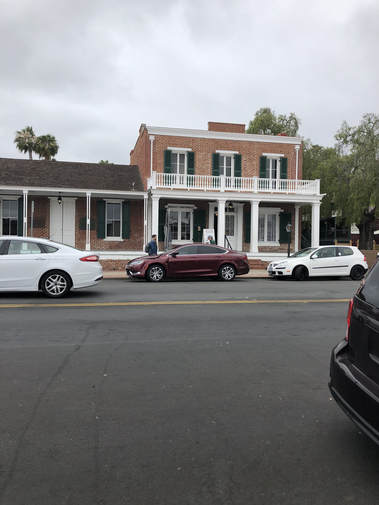 The Whaley House is a small, unassuming brick house plopped smack in the middle of San Diego's bustling Old Town, a popular tourist area featuring fun, touristy shops and lots of really tasty Mexican food. Thomas Whaley arrived in San Francisco in 1849 chasing gold in the California gold rush. Instead of panning for gold himself, however, Whaley made his fortune selling supplies to miners. His home in San Francisco burned, however, and in 1851 he moved to San Diego. He briefly returned to his family home in New York to get married and returned with his new wife, Anna. Whaley purchased the property for his home in 1855 and erected a brick house on it, completing construction in 1857. Along with creating a luxuriously-appointed home the San Diego Herald called "the finest new brick block in Southern California," Whaley also operated a general store from the property, although he soon relocated the store to a busier location. After the birth of their three children and the death of Whaley's business partner, along with the destruction of his store from a fire, Whaley moved his family to San Francisco (where they had two more children), but they returned to San Diego after a few years and re-took up residence in the brick house, where he once again operated a general store. 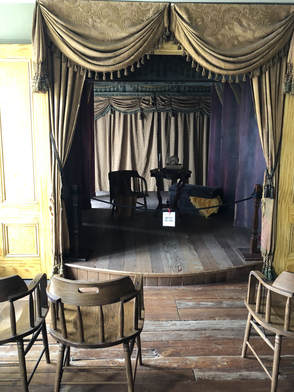 Tanner Troupe theater in the Whaley House Tanner Troupe theater in the Whaley House Other businesses operated in the house included a theater in an upstairs bedroom that was the home of the Tanner Troupe, and a courtroom in the front room granary. Violet Whaley, one of the Whaley daughters, committed suicide in the home (she shot herself) after a divorce, and both Anna and Francis Whaley died in the home. Additionally, before Whaley purchased the property, the grounds were used for public hangings, including the most famous, that of Yankee Jim Robinson, a drifter convicted of grand larceny. Many report the Whaley House as one of America's most haunted houses, and the Whaley House itself embraces the building and grounds' haunted reputation. I really liked the energy of the Whaley House, and I didn't have any significant impressions or experiences. Jim, on the other hand, who describes himself as a psychic "lead-lined bank vault," had what he felt was a very powerful experience as we peered into Violet's room. At the time, unaware of the history, he said he felt as if he was trying to slash his own wrists in despair. Now Violet committed suicide by gun, but it's interesting Jim's impression was of a suicide attempt in a room where a woman eventually committed suicide. The price to visit the Whaley House Museum is reasonable: $16 for an adult, and the tour is self guided. It's an interesting piece of San Diego history, and I especially loved the energy of the theater, which felt warm, inviting, and even a bit joyful. Parking on the street may be a challenge, but there are lots and garages with reasonable fees nearby. Be sure to enjoy some Mexican food at one of many restaurants in Old Town, and while you're in Old Town visit Gum Saan Land of the Golden Mountain, a lovely shop filled with treasures from Tibet and Nepal including authentic and antique singing bowls, South American Imports (it's tucked behind the Coyote Cafe), which is a nice crystal shop with tons of specimens and a knowledgeable, friendly owner, and MIner's Gems and Minerals (across from Gum Saan), which has some great mineral and fossil specimens. Hotel Del Coronado, Coronado Island, San Diego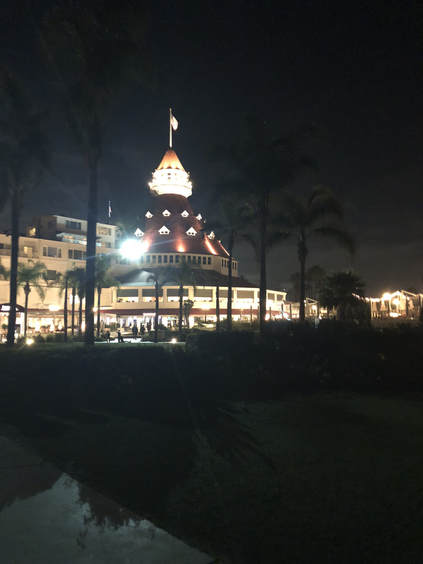 Built in 1888, the Hotel Del Coronado (also known as The Del) is a National Historic Landmark. It's currently owned by the Hilton chain and serves as an upscale resort sitting on the prime beach of San Diego's Coronado Island. The Del has a storied history. It's appeared in films, been the preferred lodging of presidents and Hollywood giants, and it is even the setting for the mystery of Kate Morgan, a young woman who checked into the Del under an assumed name in November of 1982 who was later found dead at the base of the stairs to the beach with a gun shot wound to the head. The coroner ruled the wound self-inflicted, but that ruling is still met with skepticism. Kate is said to be seen all around the Del. I've been fascinated with the Del for years and always wanted to stay there, so when we were considering vacations this year, Jim immediately suggested a stop there. We stayed three nights at the beginning of our trip. I love the energy and architecture at the Del. We stayed in the old Victorian part of the building in a room on the fifth floor overlooking the courtyard. One night, Nicole and I were walking towards a breezeway on the 5th floor when Nicole spotted an apparition of a woman. As we approached the spot, I felt a gentle energy there that traveled with us through the breezeway. I didn't see her. Other than that, not a lot of experiences there except a great love of the place and its history. Price-wise, the Del is expensive, but you get what you pay for. The service is excellent, the food is divine, the rooms are comfortable, and there's a lot to do there including gorgeous outdoor dining and bars, a world-class spa, a lovely beach, and many other amenities. Visitors can frequent the restaurants, shops, and bars at the Del. Unless you can find street parking, expect to pay for parking. Restaurants and bars are reasonably expensive. While you're there, visit the ice cream shop and enjoy the beautiful Coronado Beach. Star of India, Maritime Museum of San Diego, Embacadero, San Diego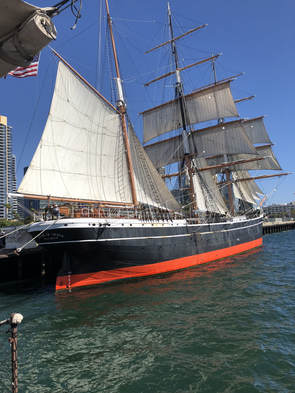 I've been hearing about the Star of India for a while, so naturally I was eager to explore it. As one of the attractions at San Diego's excellent Maritime Museum, the Star of India is an iron-hulled windjammer ship built in 1863 as the Euterpe. She sailed from India to Great Britain and New Zealand, and hauled salmon from Alaska to California. Retired in 1926, she was restored as a museum in the 1960s and remains seaworthy after restoration. During her history, the Star of India collided with a Spanish brig, endured hostile seas, experienced a crew mutiny, and saw captains and crew members killed aboard and buried at sea. I felt her energy before I even boarded the Star of India. Just walking past her bow on the dock, I noticed an aggressive and unsettled energy. Boarding, I moved to the stern first, where I felt a gentle and settled energy present. As I approached the bow on all levels, especially on the port side, however, I started to notice disorientation and what felt like heavy aggression. Nicole tells me this is consistent with reports aboard the Star of India. Apparently in this area is something called the chain locker, where an accident occurred when a crewman was crushed as another crew member raised the anchor, unaware of his presence in the chain locker at the time. I definitely feel like there's some activity aboard the Star of India, and it's well worth a visit. You can visit her by paying the price of admission at the San Diego Maritime Museum, which is $18 for an adult. This includes entry to other ships and boats in the exhibit, as well. I recommend parking in the USS Midway museum parking lot (we visited the Midway, as well), which is about $10 for the day. While you're there, take a tour of the San Diego harbor aboard one of the many tour boats or do like we did and go for a thrill ride on the Patriot jet boat. If you do that, plan to get wet and bring a change of clothes. Steam Ferry Berkeley, Maritime Museum of San Diego, Embarcadero, San Diego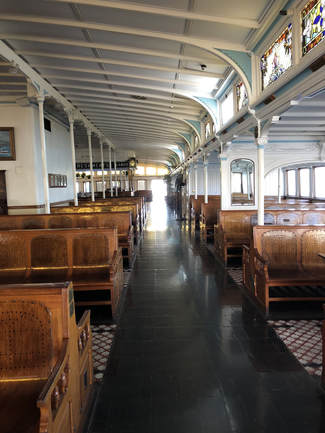 The Berkeley was an unexpected surprise for me. I had never heard of her, but she is part of the maritime museum exhibits, and she's breathtakingly beautiful, especially her upper gallery with original stained glass windows and gleaming woodwork. Commissioned in 1898, the Steam Ferry Berkeley operated on the San Francisco bay for six decades. In 1906, she ferried victims of the San Francisco earthquake and fire, operating night and day to ferry them to safety. She arrived in San Diego in 1973 and is a popular venue for parties and weddings now. I was unaware of her history when I boarded the ship, but I was immediately drawn to the upstairs gallery, where all I wanted to do was sit and take in her beauty. The energy aboard is calm, peaceful, and beautiful. She felt like home to me, something that took me by surprise. As Nicole and I sat up in the passenger gallery upstairs, I kept spotting someone peeking at me from behind a graceful archway across the ferry. Nicole saw a woman standing there. Video showed a playful light dancing in my camera. What was most interesting to me, however, was the sensation of home - feeling like I belonged on the ferry. The only other place I've ever noticed this is at Wellington, which was the subject of my first two books. Without getting too much into the history, with Wellington I felt deeply connected to a woman who died there named Nellie Sharp, and I've come to believe I was her in a past life. What's interesting is Nellie was present in San Francisco in 1906 for the earthquake and fire, leading me to wonder whether she was one of the many who rode the steam ferry Berkeley to safety. I have no way of knowing or proving it, but the connection is an interesting one to say the least. The Berkeley is part of the Maritime Museum of San Diego's permanent exhibit. She is undergoing some restoration work right now, but remains accessible. Cost is $18 for all of the boats and ships at the museum, and it's well worth a visit for the Berkeley alone. Don't forget to check out the Russian submarine and the Surprise, which was the ship in Master and Commander. They're all included in museum costs. Wear good shoes - you'll be going up and down ladders and stairs a lot. RMS Queen Mary, Long Beach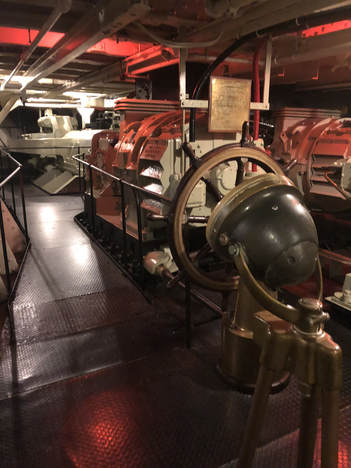 Engine room aboard the RMS Queen Mary Engine room aboard the RMS Queen Mary The RMS Queen Mary has a long and storied history as an ocean liner carrying the rich and famous including Winston Churchill, a troop transport during the war, and now as a luxury hotel that sits on the pier at Long Beach, California. My friend Nicole Strickland has written extensively about her history and hauntings, and she was kind enough to share the Queen Mary with us. She is a beautiful ship with many interesting areas. I had numerous impressions and experiences aboard the ship. The ship houses many museum exhibits near the engine room, and as we approached this area I felt deep sadness and actually started crying. In the engine room, a forward watertight door I am assured is never open stood open, and we entered a small area in the deepest recesses of the ship. There, we encountered something that I felt physically push me backwards. It turns out this is the area behind watertight door 13 where a crew member was found crushed to death. In one of the engine rooms (pictured), I actually saw a man's head pop out from behind the piece of equipment pictured in the foreground of the image to the left. Of course, nobody was there. In the third class lounge (now equipped as an event space), I felt deeply disoriented. And all over the ship, I felt waves of varying emotions that were difficult to explain. I'd say she definitely has a ton of energy. The ship is reasonably priced for a stay; we stayed in the Queen Mary Suite, which was huge and comfortable. You can go up to the Promenade deck to dine at one of the ship's restaurants or bars, and cost to enter exhibits is reasonable, as well. It's worth a visit if you're in Long Beach, if for nothing else than the history and beauty of the ship. There's a reasonable fee for parking. Battleship USS Iowa, Los Angeles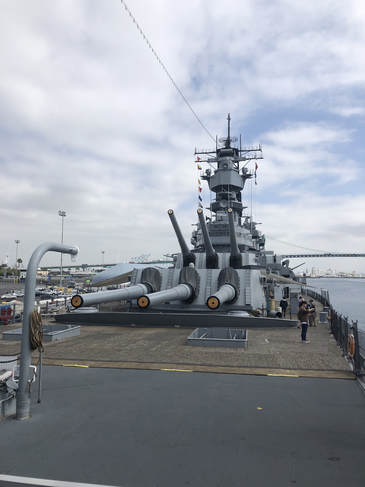 A short but terrifying drive away from the Queen Mary is the Battleship USS Iowa, commissioned in 1943 and now docked as a Naval museum. The battleship was involved in WWII, the Korean War, and it continued operation as a naval vessel in the Cold War and beyond. FDR famously traveled on the battleship to cross the Atlantic in 1943. In 1989, the Number Two 16 inch gun turret exploded, killing 47. There remains controversy over the findings of the Navy's investigation into the incident. Like many decommissioned ships, the USS Iowa has reports of hauntings, particularly associated with that explosion. Many report seeing sailors in dress blues aboard the ship. Jim was really curious about what I'd experience aboard the Iowa, particularly given the mystery surrounding the Number Two 16-inch turret. Honestly, I didn't feel much there, but when we entered the ship's museum at the end of the tour, it had a room with artifacts from the explosion. It was there I felt a surge of energy, as well as deep sadness and the urge to cry. Jim felt it as well. I stood in the room for a few minutes before I exited to another part of the museum. However, as I stood in another part of the museum, I felt the pull back to that room and heard someone say in my ear, "Come back. I need you to hear my story." I went back into the room with the artifacts from the explosion again, and after a wave of sadness, a man's voice told me this. "My name is John. I was here, and then I was gone. I don't understand what happened to me. One minute I was here. Then, I wasn't." There were three men named John listed as fatalities in that incident. I tried to get more information, but that was all I kept hearing; "I was here and then I was gone." As a piece of naval history, the battleship USS Iowa is fascinating. The tour is self-guided, although there are a ton of docents and veterans aboard to answer any and all questions. There are many areas of the ship you cannot access, but in the museum are multiple photos of those areas you can look at. Ticket prices are about $20. One nice touch is that they announce veterans who come aboard over the loudspeakers, a nice bit of respect paid to those who serve. We didn't set out to take a haunted Southern California tour, but in our travels we came across many locations with haunted history. I'd heard of many before our trip and enjoyed exploring their history and feeling their energy. I'd recommend visiting each if you happen to be in the area. They are all well worth the cost of admission. Parking is reasonably priced. Here's the audio from a recent appearance with me and Nicole Strickland (we discussed paranormal investigation) on the Mantz and Mitchell show on KKNW in Seattle. Recording date was June 17, 2017.
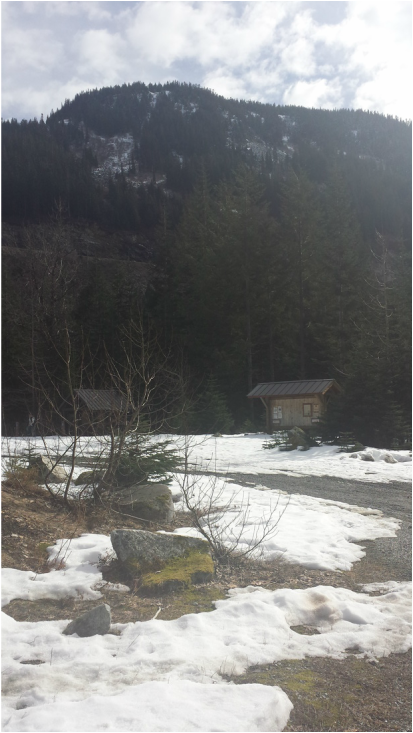 I took this picture. Note the orientation of the photo is the same as the orientation of how I held my phone. I took this picture. Note the orientation of the photo is the same as the orientation of how I held my phone. We've had a very mild winter here in the Pacific Northwest. The ski areas mostly closed at the end of January, and the snow level is around 5,000 feet. While that spells disaster for hydroelectric power generation, it's also made mountain trails more accessible than usual. Wellington is no different. This past Sunday was the 105-year anniversary of the Wellington avalanche. I've only ever had one other opportunity to get into Wellington on the anniversary, which was the 100-year anniversary back in 2010. On that date, we partially jeeped in and partially hiked in, and there was still a lot of snow. This year was different. A group of us drove up Sunday morning in a large 4WD truck and drove all the way down the snow-free back road and into Wellington. The main road is still blocked by a large pile of plowed snow. The back road, while accessible, is very, very bumpy this year. If we'd gone in my small SUV, we would have high-sided on one of the huge ruts. In the large truck, however, we made it in. The hill heading down the back road doesn't have any snow. However, when you get to the Old Cascade Highway, there is snow, although there are melted tire ruts, so you can make it through okay. Once in the parking lot at Wellington, there is about a foot of snow that is very pitted and icy. The trail to the snow shed has about a foot of snow on it, as does the trail to the Cascade Tunnel. Once you get to the bridge into the snow shed, the snow disappears. There is no snow on the west side of the snow shed, so the trail down to Scenic is relatively clear. I'd say if you plan to go, make sure you're in a high-clearance 4WD, and take the back road at your own risk. There is a very real possibility of getting stuck in spite of its snow-free status. To me, going to Wellington is always sacred, but being able to visit and remember on the anniversary of the accident is always a moving time. We took flowers, as well as the things the spirits there seem to like best - whiskey and cigars. One of the members of our group felt overwhelming sadness through the entire snow shed, to the point that he was in tears the whole time. The minute we walked out onto the trail on the western side, his entire demeanor changed. We also had the usual interesting equipment malfunctions. We had flashlights and lasers that came on without prompting - several times. A few of us went to take pictures, only to have the pictures snapped for us before we could pull the trigger ourselves. It happened to me three times, and what was weird about it was this: on the three pictures I didn't take myself, the orientation was off and couldn't normalize. So that was weird. Of course, there were also the random noises - footsteps behind us when no one was there, sounds of children laughing…the usual. I'd say that the spirits still remain at Wellington - or at least come to visit quite a lot. I can feel them when I am there, as can many others. As always, they seem to find ways to ensure that newcomers to the site understand their story. They communicate in whatever way that person can understand. With my friend, it was through his emotions. Someone else may see something, hear something, or feel something, or simply understand something. For me, when I take new people to Wellington, one of the most significant experiences I have is watching them as they "get" the place. It doesn't happen with everyone, but certain people have something come over them while they are there, and I can see and feel that they truly understand what is so special about Wellington. It's been 105 years since the avalanche that took so many lives. It's been six years since I first went to Wellington myself. In that time, it has reminded me again and again that it is a sacred place that has a story to tell, if only you choose to listen. 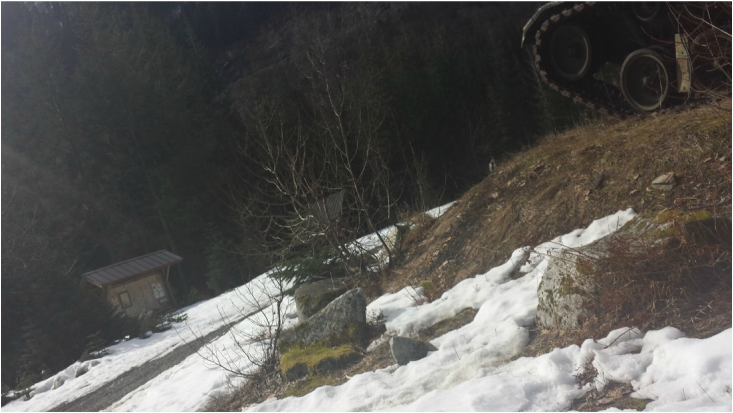 This picture "took itself." I was holding the phone in its usual vertical position, yet the photo itself came out horizontal. While it lines up fine on this screen, on my phone it will only show up sideways on my camera. I wasn't hold my camera upside down, at an angle, or horizontally when I snapped this photo. Could be a phone glitch, but it only happened on the three photos I had lined up to take but that then took themselves. Learn more about Nellie Sharp.
Elaine recently learned a little more about Nellie's life and death. Apparently, Nellie filed for divorce from John McGirl in Spokane a few weeks before she got on the train for Wellington. In the divorce papers, she cited emotional and physical abuse. She was separated but not yet divorced when she was killed. This is why John McGirl was listed as Nellie's next of kin and was able to collect the money the Great Northern Railway gave for burial to each of the families of the Wellington avalanche victims. Instead of collecting Nellie's body and having her buried, he took the money and didn't claim her body. Her sisters came out from Illinois to bring Nellie home to rest. The Sharp family didn't have enough money for a headstone, so Nellie was buried 104 years ago today without one. Now she has one. The cemetery tells me it was set today.  It's the way of live radio that things don't always go as planned. I've been co-hosting Paranormal Underground Radio with Rick Hale for years now, and occasionally all of our carefully laid plans go up in smoke minutes before the show is supposed to air. Heck, sometimes it happens when the show is already on the air - such as when a guest fails to answer their phone when we call them for their interview partway through the show. When these situations arise, what listeners hear on the air is mild dismay along the lines of, "Oh shoot! I was really looking forward to talking to him/her." What goes on behind the scenes, however, can only be described as all-out bedlam. While we sound calm on the air, we're usually in the midst of a full-blown panic about how we are going to entertain our listeners for the next few hours. Still, when these things happen, we know we just have to wing it, and so we do. Ironically, sometimes these panic-inducing shows turn out to be among my favorite we've ever done. Such is the case of our show last night. Rick was off for the evening, and our guest canceled at the last minute. Fortunately the fabulous Chuck Gotski of In the Dark Radio filled in for Rick, and he brought his lovely daughter, Rachel, along as a guest (that's Chuck and Rachel, above). Rachel is 17 and gearing up for her first investigation with her dad's team. Chuck and I wound up picking her brain for over an hour, getting one teen's view of all of this paranormal stuff. It led to some pretty thought-provoking conversation that continued after Rachel said good-bye. As Chuck and I continued our on-the-air conversation, listeners in the chat room had plenty of questions for the two of us that led to in-depth discussion about paranormal and metaphysical topics. One listener asked a question I actually get a lot, and it's this: Do ghosts know they are dead? It's a good question. It's also one that's the subject of much debate in the paranormal field. I've formed my own opinion based on my years of experience communicating with ghosts, the metaphysical and spiritual understanding I have of the universe based on my education and studies, as well as activities in which I've engaged such as spirit communication and life-between-lives hypnotherapy. I don't believe it is a question of whether ghosts know they are dead. I would imagine some do and some may be confused. In some cases, what we experience as "ghosts" are people who have already crossed over coming back to visit from the other side. These spirits definitely know they're dead, and they're just checking in on people or places they've loved. Other energies we experience as ghosts may not be dead at all. One theory suggests they could be spirits of people sleeping and traveling astrally in dreams. Others may be living people consciously engaged in astral travel. Other spirits we encounter might just be a recording of a life event - nothing more than a memory that plays itself over and over similar to a song on a DVD. But what of those spirits who, for lack of a better definition, seem like they could be trapped here in this plane as ghosts, unable to cross over to the other side? This is what I believe: These spirits aren't trapped. They can cross over whenever they wish because the doorway is always there, open to them. Instead, the issue many of these types of spirits have is that they continue to remain ego-identified with who they were in their last lifetime. It's not a matter of whether they know they are dead. It's that they don't remember who they truly are as a soul. Somehow, their identity has remained entangled with their past living self, and they've temporarily forgotten that who they really are is a piece of the Divine. I believe when we come into each lifetime, we agree to forget who we are as souls. It's like going to a movie, agreeing to suspend disbelief, and immersing oneself into the world of the film for a few hours. In the case of souls, we do this for a lifetime. Some people may remember who they really are and identify with their soul state during their lives. Others remain engaged in the illusion of life until the point of their death, when suddenly they let go of their ego identities and merge with their Divine (soul) selves. Others struggle with letting go of the ego-identity a little more and may remain as "earthbound" spirits until such a time as something (or someone) helps them to recall their own Divinity. Does that mean they don't know they're dead? It's hard to say. What it does mean is that, for the moment, they don't recall their own Divinity. Eventually they will, because we all do. For now, they don't. There are many reasons a spirit may remain ego-identified after death, such as wanting to protect possessions, attachment to a place, trying to find lost loved ones, asking to have a story told, or fear that acts in life may lead to Hell in the hereafter. There are as many reasons for remaining ego-identified as their are souls in that state. My goal is always to help them find a way to remember their Divinity so they can make the choice to go through the doorway and re-merge with the Source of all that is. Sometimes this takes a quick conversation. Sometimes it takes hours, days, weeks, months, or even years depending on the spirit and the situation. I never demand they go or tell them they have to cross over, because I believe it isn't my place to tell any other soul - living or dead - what he or she should do along the path. Instead, I communicate with them just as I would a living person in an attempt to help them resolve their issues so they can move on to the next stage of their evolution. 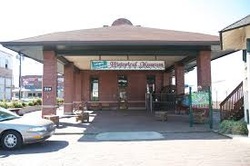 After looking through all my writings about Wellington over the years, I've come to realize I just haven't give enough love to my favorite haunt in my own back yard. I'm talking, of course, about the Lewis County Historical Museum. My team, South Sound Paranormal Research, has been investigating at the museum for years. The paranormal activity at the museum has been featured on an episode of Biography Channel's My Ghost Story. I wrote a little about the museum in Dancing with the Afterlife, and also featured it in an article in Paranormal Underground. It is a very active place, and we've captured a great deal of evidence over the years. Due to circumstances beyond our control, the museum closed to paranormal investigation for a few years, although I've worked at the museum as a volunteer during that time. Luckily, we were able to return in January, and we weren't disappointed. It remains highly active, with spirits that engage investigators. In a bit of great news for anyone wishing to experience the Lewis County Historical Museum, it has reopened for investigation. There is a fee to investigate because the museum is a non-profit organization and needs to pay someone to be there during the investigation. For more information, you can contact the museum director, Andy. You can also visit the museum during its regular hours, which are currently Tuesday - Friday 10-3 and Saturday 10-2. To see/hear some of the evidence we've collected at the museum, visit the evidence pages of SSPR's website. 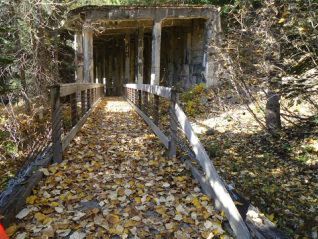 Photo by Elaine Davison Photo by Elaine Davison It's snowing at Stevens Pass. As the snow level drops down the mountain, Wellington once again becomes inaccessible to all but the hardiest of people willing to brave the cold and several feet of snow. Since I'm a wimp when it comes to cold, I can't drive in the snow, and I don't own a snow mobile, this means Wellington is inaccessible to me. I'm okay with that this year. Usually when summer draws to a close and the first snowfall dusts Wellington, I feel a sense of loss. It's difficult to wait several months to be able to return to my friends at Wellington. In the winters they call to me, and I can feel them pulling, asking me to come up again. This year is different. As snow blankets this beautiful place I am completely at peace. I can only guess I am at peace because they are, as well. Since I started in 2009, the spirits at Wellington have been persistent. They had a few things they wanted before they felt they could rest. First, they wanted their story told. I am not alone in sharing the tale of Wellington. Many others have done a wonderful job of sharing the story of the avalanche, its victims, and the ghosts there. All who have visited and gone on to tell their tale to even one other person helped assist the spirits in their mission to be remembered. They are very grateful, and so am I. I hope that all of you who have been touched by the Wellington story continue to share it with anyone who will listen. Every time you do so, it honors those who died, as well as the men who fought to save them. The second thing the spirits kept requesting was a memorial. They wanted their names in writing posted where they died. It is incredible to me that the names were never posted there before, but they weren't. Instead, trail signs gave snippets of information about the tragedy without naming names. This fall, two wonderful donors created and installed the memorials the Wellington spirits wanted. When we dedicated the memorials in late October (one of Wellington's last sunny, snow-free days of the season), I felt the overwhelming gratitude, joy, relief, and peace of the spirits as they finally received what they so desired. Others who were with me felt that, as well. So strong and poignant were their feelings, it nearly brought me to my knees. Now, the spirits have what they sought. Their story is on the lips of many. Their names are on a sign for all to see as they pass through the snow shed. Perhaps it is no coincidence that, once these needs were satisfied, the spirits at Wellington stopped pulling at me. It is time for them to rest, and I pray that is what they are doing. The second connection I felt to Wellington was very personal. It was my search for Nellie Sharp - the young woman who died in the avalanche for whom I felt such affinity. Now that my friend Elaine found Nellie, my desire to know her better is satisfied. I believe I understand why I was drawn to Nellie. I have one last task to complete with regards to Nellie Sharp, but it is a deeply personal one that I choose not to share with anyone but those to whom I am the closest. It will be complete before Wellington thaws once again in early summer. Even though I have yet to accomplish that task, I feel a sense of completion. I believe I did what I came to do at Wellington. I have reached the end of a five year journey. While I will continue to tell the story and visit a place that has become sacred to me, the relationship has shifted. I finally feel I am ready to move forward to new projects. What those projects are, I have no idea. I'm sure that the universe will deliver them when the time is right, just as it did with Wellington. Many who experience Wellington have voiced similar thoughts to me. Just like me, they sensed 2013 was a year of winding down at Wellington. Several have expressed that they, too, feel a deep sense of closure and peace. I can only hope what they express is a reflection of what the spirits feel. It has been more than 100 years, and they deserve peace. They deserve to return Home. I can't say for sure that no spirits remain at Wellington. Perhaps they will stay because they love it. Maybe they've returned Home. Maybe they'll come back to visit from time to time. All I know for certain is what I feel. I am profoundly grateful for the experiences I've had at Wellington, and I'm humbled at the opportunities I received to grow as a soul because of my time spent there. For those souls - both living and dead - who have participated in that journey in any way at all, I offer you my deepest thanks. You have become my family, and you all own a piece of my heart. 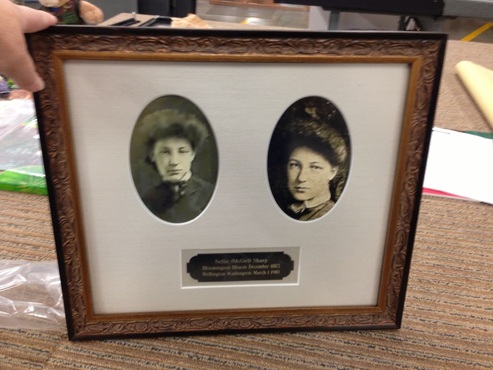 When I wrote Avalanche of Spirits: The Ghosts of Wellington, I mentioned Nellie Sharp briefly, telling readers she was a young, divorced freelance reporter who was on the train writing a story for McClure's magazine about train travel in the Wild West. She was 26 years old when she died. As I wrote that brief passage about Nellie in Avalanche, what I failed to mention was that from the first I'd heard about her, I'd felt a growing connection to her. I was trying to learn more about her. Little did I know that it would take five years to finally come face to face with Nellie Sharp with the help of some pretty amazing friends. At the time, I couldn't really tell you why I was drawn to Nellie Sharp. As I searched for her in the early days, I caught intriguing glimpses that strengthened the connection. Of course the natural connection was this: we are both writers. But it went deeper than that for me. Just like I was drawn to Wellington, I was increasingly drawn to Nellie Sharp. Unfortunately, I'm not great at digging really deep. My early searches were limited to books, newspaper accounts, and genealogy websites. Nellie Sharp is a pretty common name from the time. Her married name, McGirl, was also quite common. All I had were her names, as well as her date and place of death. After learning a little, the trail grew cold. After that initial search, I only knew slightly more than what I'd written in Avalanche. One of the train's passengers, Sarah Jane Covington, wrote letters home to pass the time on the trains. The letters were recovered from the avalanche wreckage. Sarah spoke of people on the train in her letters, and her words provided my initial glimpses of Nellie. Nellie was somewhat of an adventurer, it seemed. She hung out with the "smart crowd" (that's what Sarah called them) on the train - a group of people thrown together in frightening and frustrating circumstances who sought comfort and entertainment from one another as they sat for nine days on a small train and watched avalanches come down around them. Nellie's "smart crowd" was a group of younger people traveling without families who would gather in the train's smoking car and share whiskey, tobacco, and laughter. Among the group, Nellie quickly became known as "Wild West Girl" for her adventurous spirit. In Northwest Disaster, author Ruby El Hult also mentions Nellie briefly, saying she probably helped wait tables at Wellington's local eatery, Hotel Bailets, while the train was trapped by snow. Of course the other thing I knew about 26-year-old Nellie was that she was divorced - or at least in the process of getting a divorce. When you consider that it was 1910, this in itself was a rather unusual state of affairs. Nellie, it seemed, wasn't afraid to buck convention. After gleaning that smidgen of information about Nellie, I grew frustrated with my search. I had reached a proverbial dead end, and I really didn't know where else to look. Over the next few years as I felt my connection to Nellie grow stronger, I made several more attempts at finding more information, only to remain stuck in the same spot. At the same time I was searching for Nellie, I was also promoting Avalanche of Spirits. I appeared on many radio shows talking about the book and the haunting. If you know much about paranormal radio shows and the paranormal field in general, then you won't be surprised to hear this. On many of those shows, as well as at the conferences where I spoke, I ran into a lot of psychics. Many of those psychics had the same thing to tell me as I shared the tale of Wellington: "You were on that train." I've always been fascinated with the topic of reincarnation. I'd read a great deal of literature on the topic and had come to the conclusion that a preponderance of evidence suggests reincarnation is very likely. So when several people told me, "You were on that train," I didn't really dismiss the idea. It could explain the compulsion I had to learn more about Wellington from the very first time someone mentioned the story to me. Still, I remained skeptical. While I certainly believe reincarnation is a distinct possibility, I doubted I would ever be someone who would find someone whose body my soul used to inhabit. Then came the night at Wellington I described in Dancing with the Afterlife. It was the confluence of all of these diverse threads of information I'd been following with regard to Wellington, the haunting there, and many other subjects I'd pursued in my afterlife research. While I describe the events leading up to this in detail in Dancing with the Afterlife, I'll summarize them here. In the summer of 2012 at Wellington, a new presence made himself known to me. A gentle giant of a man, every time I was at Wellington this presence who was called "Bear" would insert himself in my space. He'd stroke my cheek and tell me over and over again, "You know me. You know me." He was very persistent, and it made me quite uncomfortable. I was at Wellington one night in late summer with a psychic I knew. It was her first time at Wellington, and she claimed she had completely refused to read or hear anything about it until she'd experienced it herself. She claimed she hadn't read my book, and she'd avoided all my talk about Wellington. She hadn't read the lists of people who had died. She said she was a blank slate as far as her knowledge of Wellington went. That day at Wellington, several of us watched that psychic put on a rather impressive performance. As she walked through the site, she came up with specific names and information about Wellington, the passengers, the rail workers, and the avalanche itself that were remarkably specific and accurate. Late in the afternoon, we were standing in the snow shed when the now familiar presence of Bear approached me. I finally said to the psychic, "Who does this guy think I am?" Her answer about knocked my legs out from under me. "Nells." I actually collapsed a little into Jim, so shocked was I with the answer. "Do you mean Nellie?" I asked. "Yes. But he calls her Nells." Needless to say, my fascination with Nellie suddenly made a little more sense. As we sat on the observation deck at Wellington that evening, I told my psychic friend about Nellie and my fascination with her. I shared with her my fruitless search to glean more information. A friend knew of my interest and lack of ability to find much about Nellie myself. Fortunately, she was better at it than me, and she quickly found Nellie's family, learned Nellie's ex-husband's first name, and began relentlessly tracking Nellie throughout her brief 26 years of life. After her initial research, I posted these findings. My friend wanted to get a picture of Nellie for me, and she promised she wouldn't quit until she did. In the process, she made numerous telephone calls to people all over the United States. Slowly, she fleshed out the details of Nellie Sharp's life. Nellie was born in Bloomington, Illinois in December of 1883. She was the youngest of a whole herd of siblings, and her parents were George and Minnie Sharp. George was a railroad engineer. Nellie was a musician who played the clarinet. She worked for a short time as a telephone operator. She was also a writer who'd written for local newspapers and covered events such as the St. Louis World's fair. She was a golfer, as well. Nellie's family valued education, so she attended a few different colleges. She met and married John T. McGirl when she was 21. They moved to California together, but we all know how that marriage worked out. February 1910 found Nellie in Spokane, Washington with her friend, Mrs. Herbert Tweedie. The two were heading in separate directions on trains so they could write about their adventures for McClures. They drew straws to see who went in which direction. By this simple twist of fate, Nellie Sharp McGirl wound up on Great Northern Railway's Local No. 25, headed for Seattle. An avalanche waylaid the train, which was stuck in the North Cascades of Washington State for the next nine days as snow storms raged around them. At 1:42 AM on March 1, 1910, a lightning bolt struck the hillside above the trains, and Nellie was aboard as the trains were swept down the mountainside and deposited on the banks of the Tye River. Nellie was one of at least 96 people killed. When Nellie was killed in the avalanche, John McGirl was still listed as her next of kin. He took the money the railroad provided so the families of the victims could bury them, but he left Nellie's body behind at Wellington. Instead, two of her sisters came from the Midwest and claimed Nellie's body. Without the funds from the railroad, the family couldn't afford a headstone, so Nellie is buried in an unmarked plot. That is the story of Nellie Sharp's brief life. About six weeks ago, my friend's quest to find a photograph of Nellie Sharp came to an end. Although she apparently told everyone I know she had the picture, she didn't tell me because she wanted to surprise me. It turns out my friends are good at keeping secrets. The search for Nellie is complete. I know her story now, and I know her face. I may never truly know why I have such a deep connection with Nellie, but it is there. Two early descriptions I read of Nellie both really resonated with me. In The White Cascade, Gary Krist called Nellie, "A decidedly stout young woman of ebullient good humor." Ruby El Hult described her as "Short, broad, and irrepressible." It seems as if she was a creative spirit who pursued her life with passion and gusto. She's my kind of gal. While her life was short, I have a hunch her heart was huge. Whatever our connection, I know this for sure. Nellie was a cool chick. And she looks like my grandmother. Karen Frazier is a writer, musician (she plays flute and a few other instruments), and a golfer (she loves the game but is terrible). Born in December, Karen was first married at the age of 21 and divorced by the time she was 23. Now she's remarried to a wonderful bear of a man, although his name is Jim and not Bear. She's been on the Spokane to Seattle train a few times, although Amtrak runs it now and not the Great Northern Railway. She currently works as a newspaper reporter and freelance writer. |
Categories
All
Archives
December 2022
|
AUTHOR KAREN FRAZIER
- Home
-
Books
- Angel Numbers for Beginners
- Avalanche of Spirits
- Chakra Crystals
- Complete Reiki
- Crystal Alchemist
- Crystals for Beginners
- Crystals for Healing
- Dancing with the Afterlife
- Dream Interpretation Handbook
- Essential Crystal Meditation
- Higher Vibes Toolbox
- Introduction to Crystal Grids
- Little Book of Energy Healing Techniques
- Noisy Ghosts
- Reiki Healing for Beginners
- Transform Your Life with Alchemy
- Ultimate Guide to Psychic Ability
- Usui Ryoho Reiki Manual
- Cookbooks
- Other Books
- Classes
- Connect
- Meditate
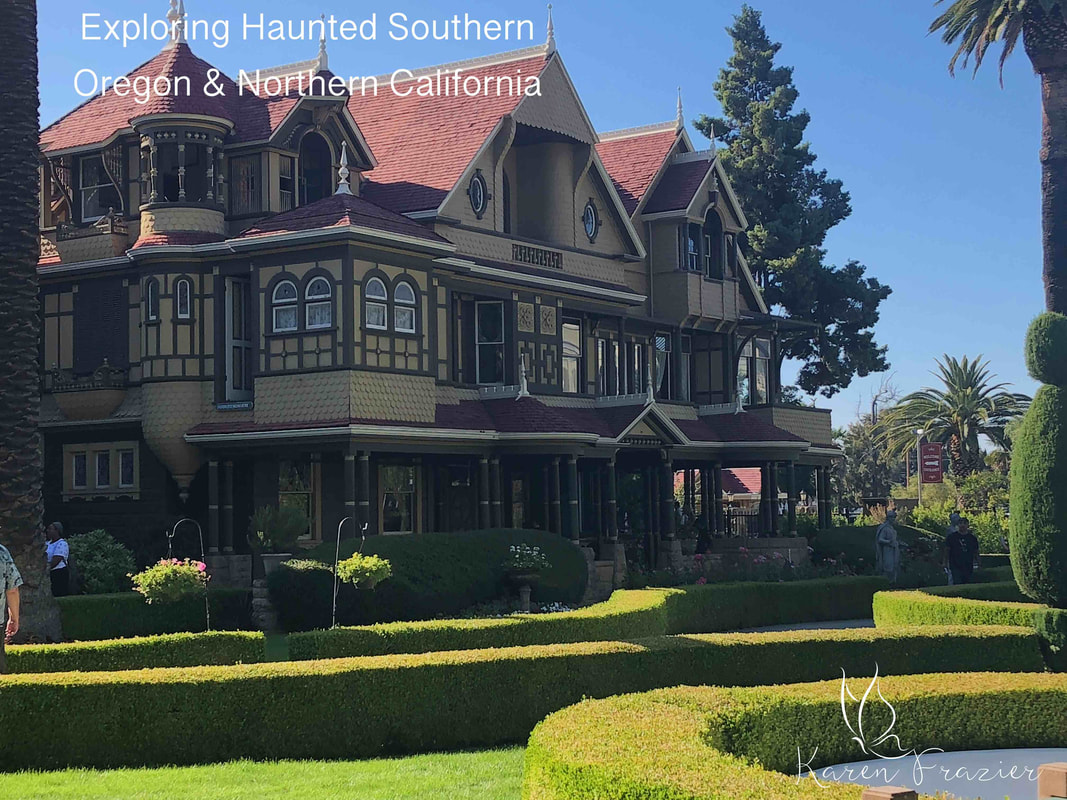
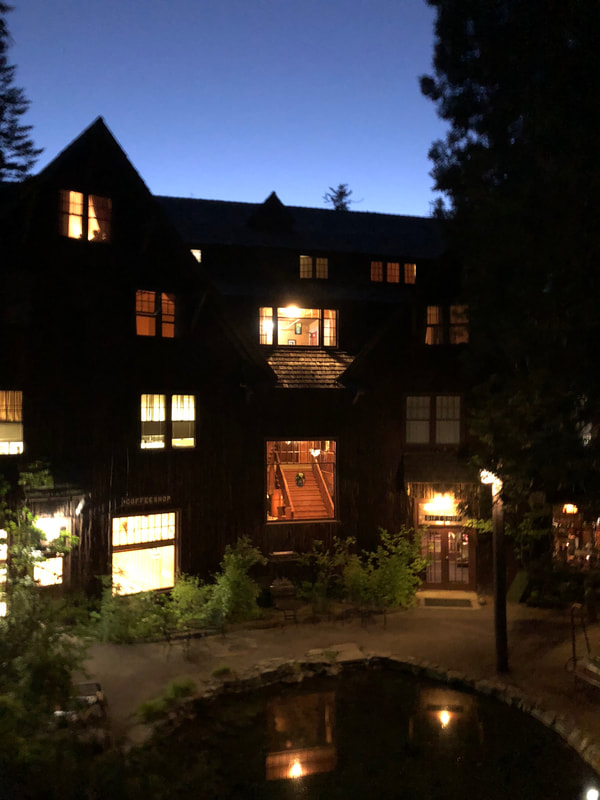
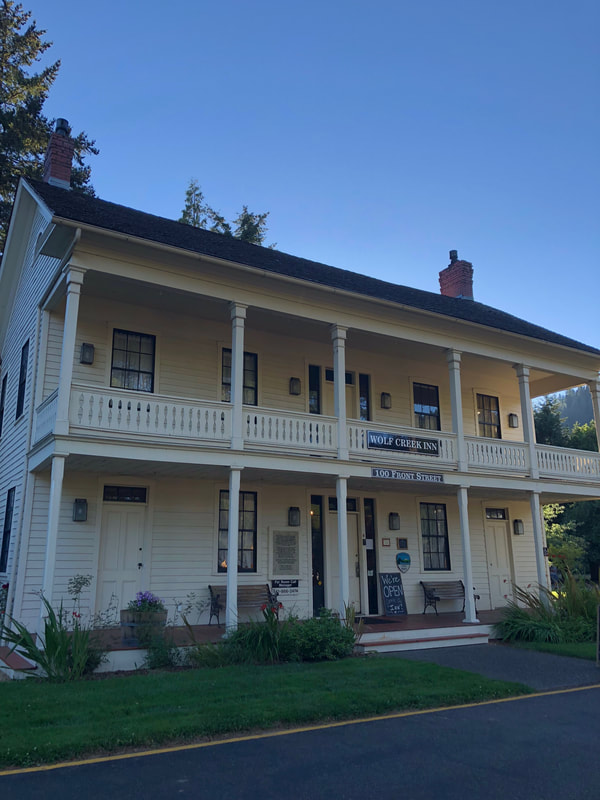
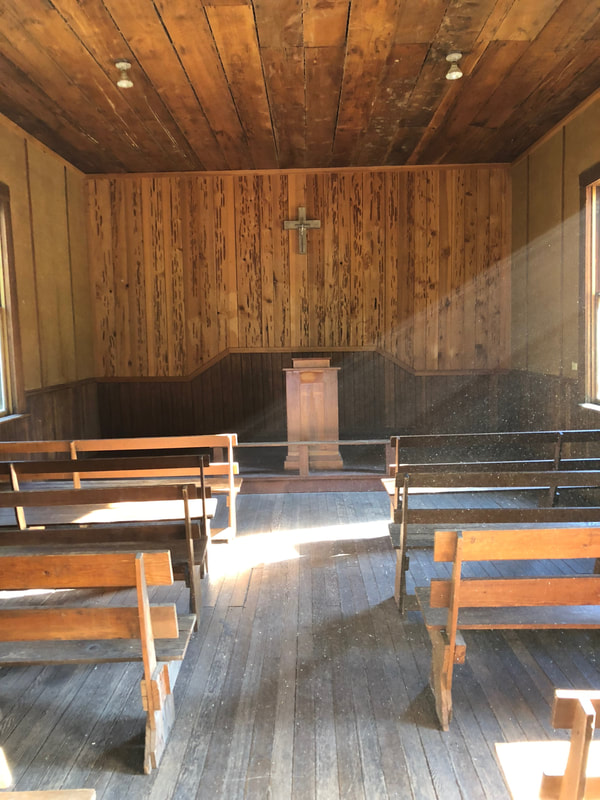
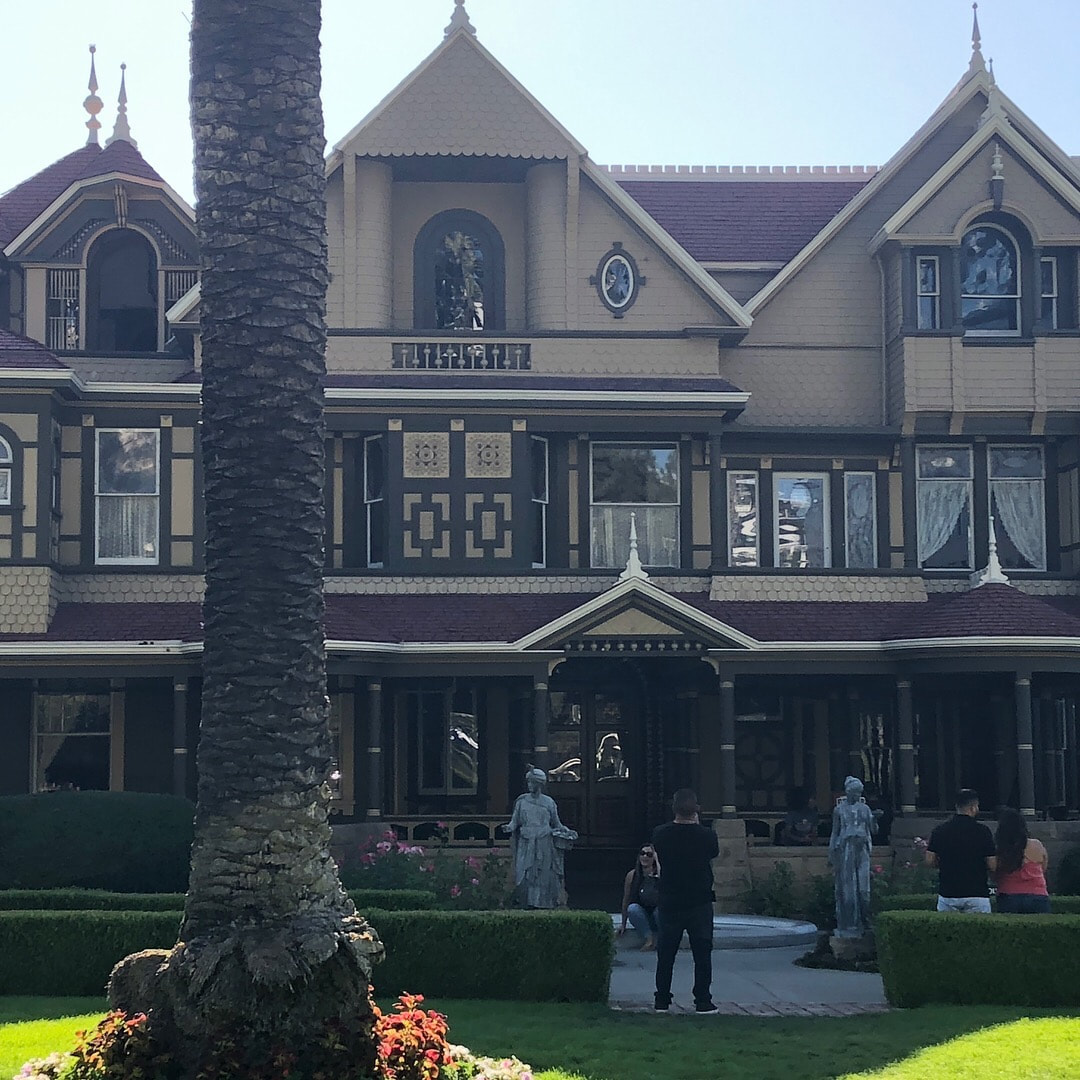
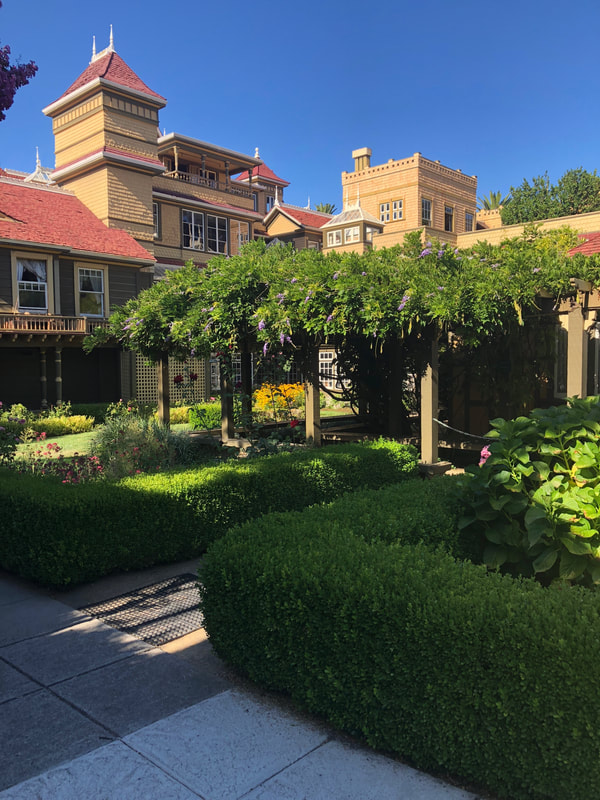
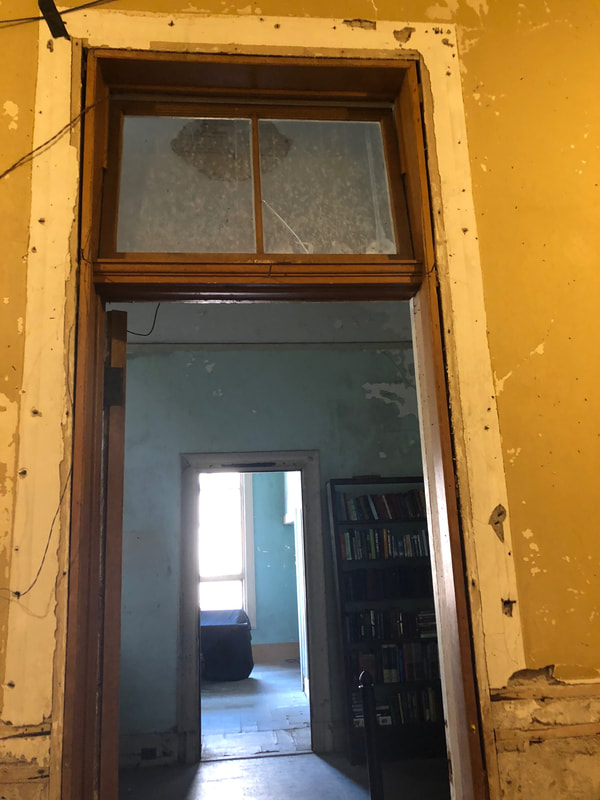
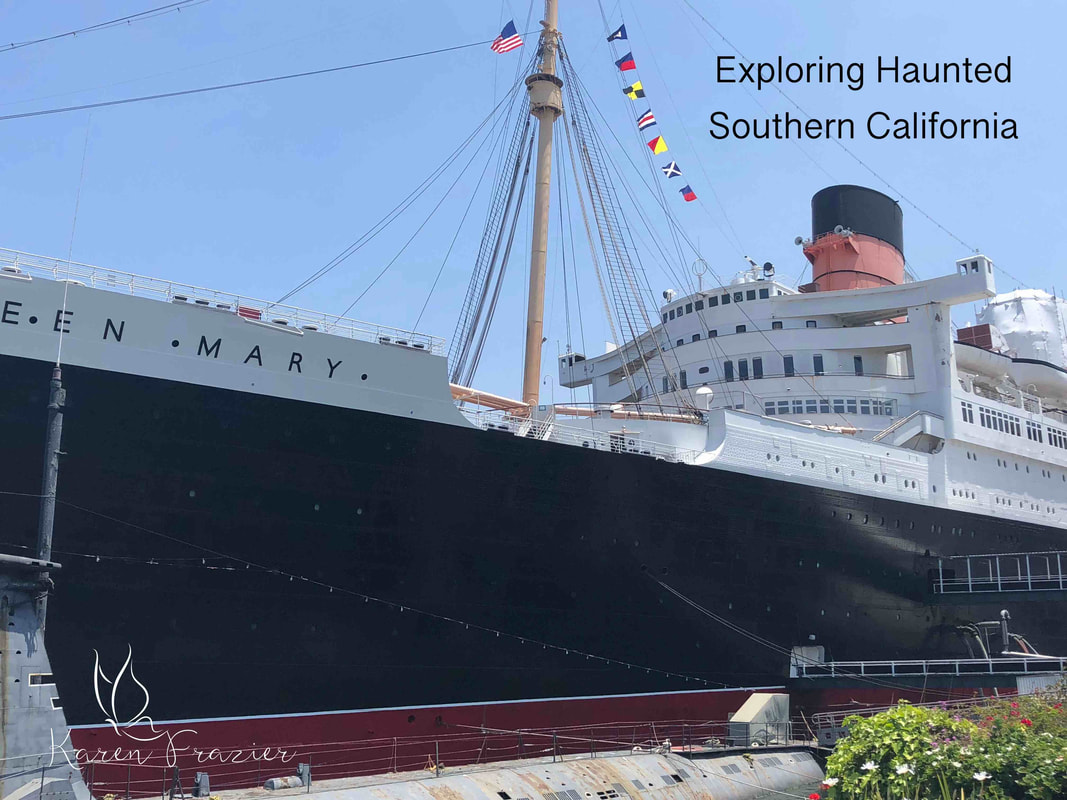
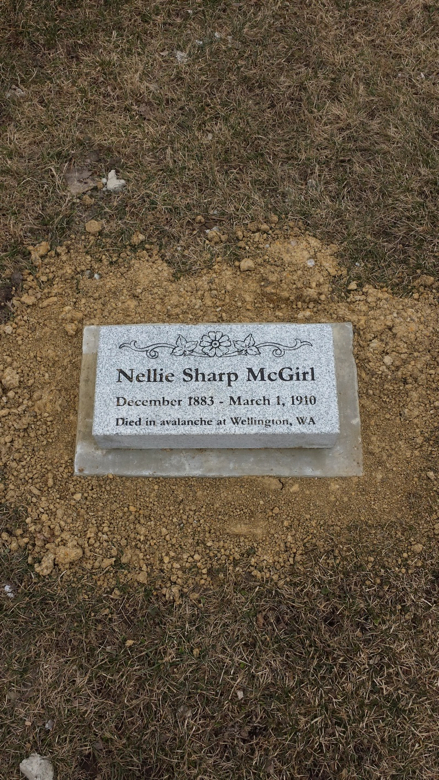
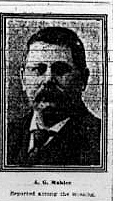
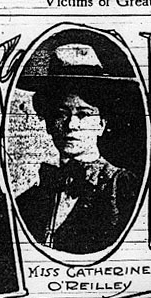
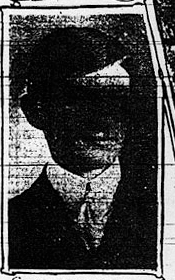
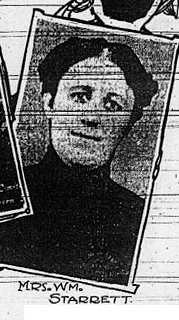
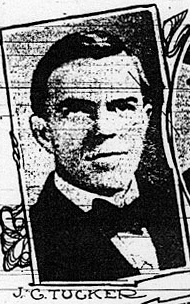
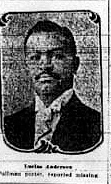
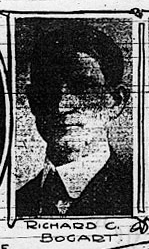
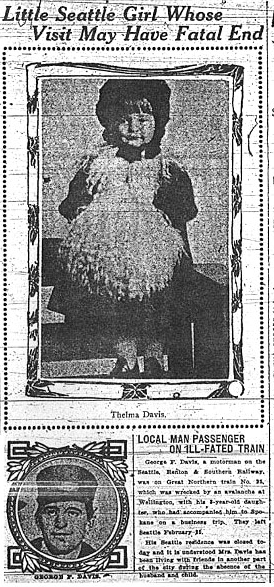
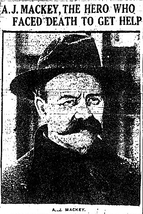
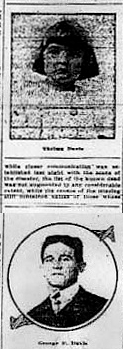
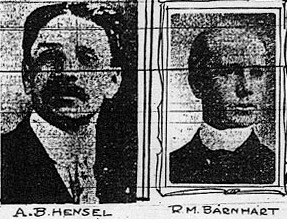
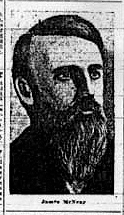
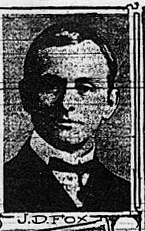
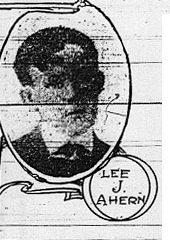
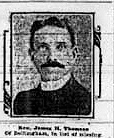
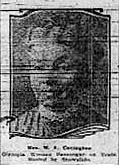
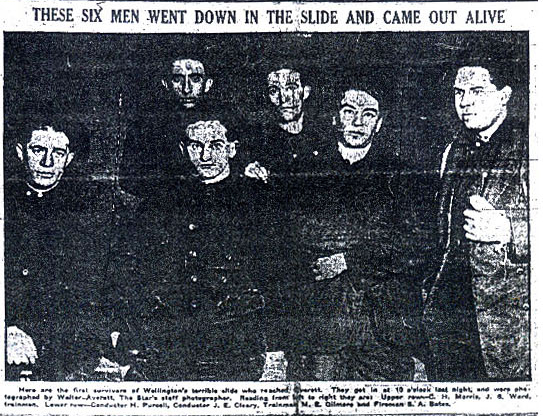
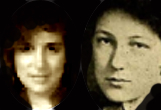
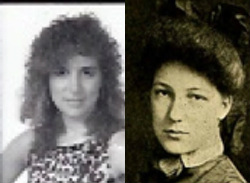
 RSS Feed
RSS Feed
